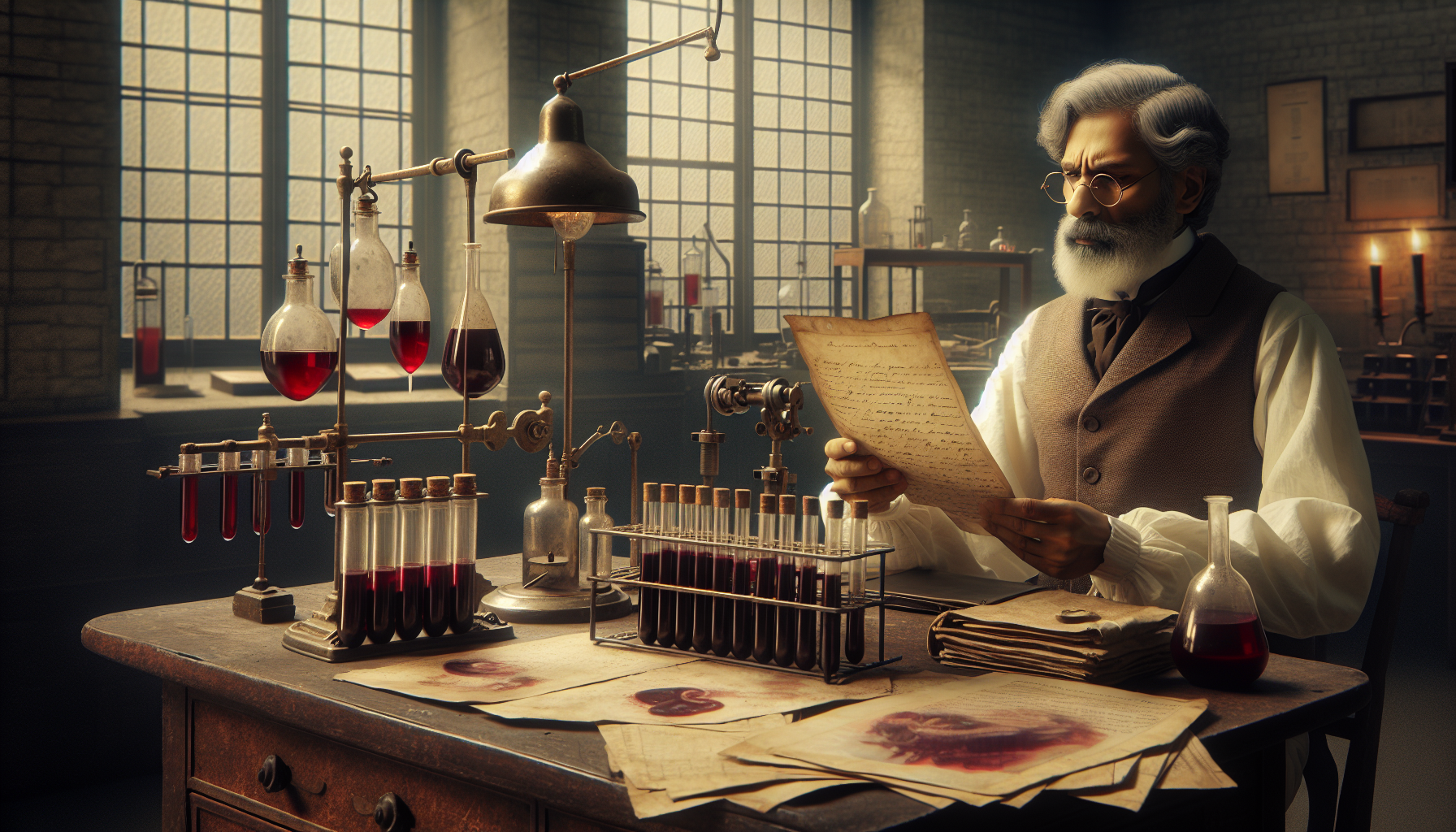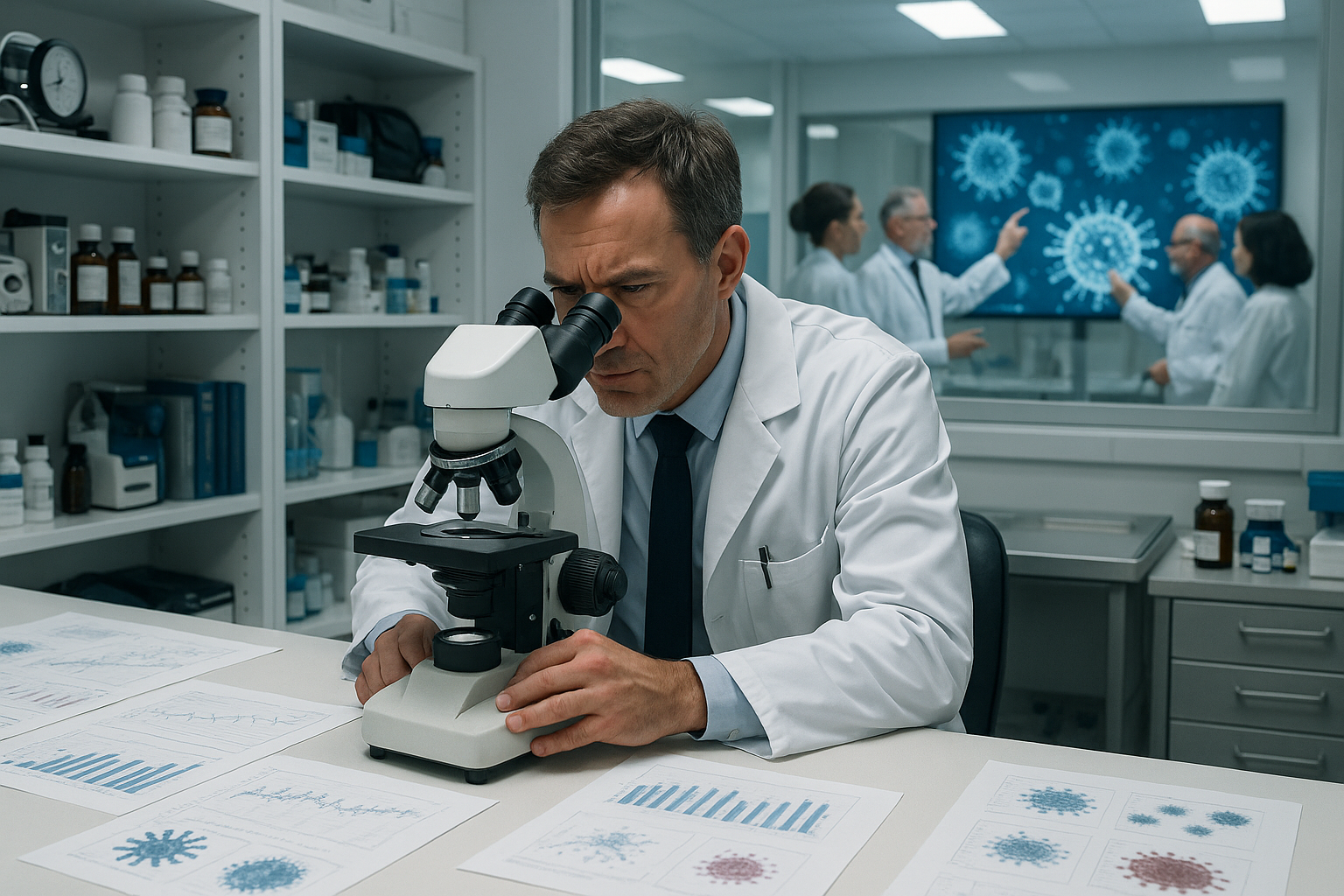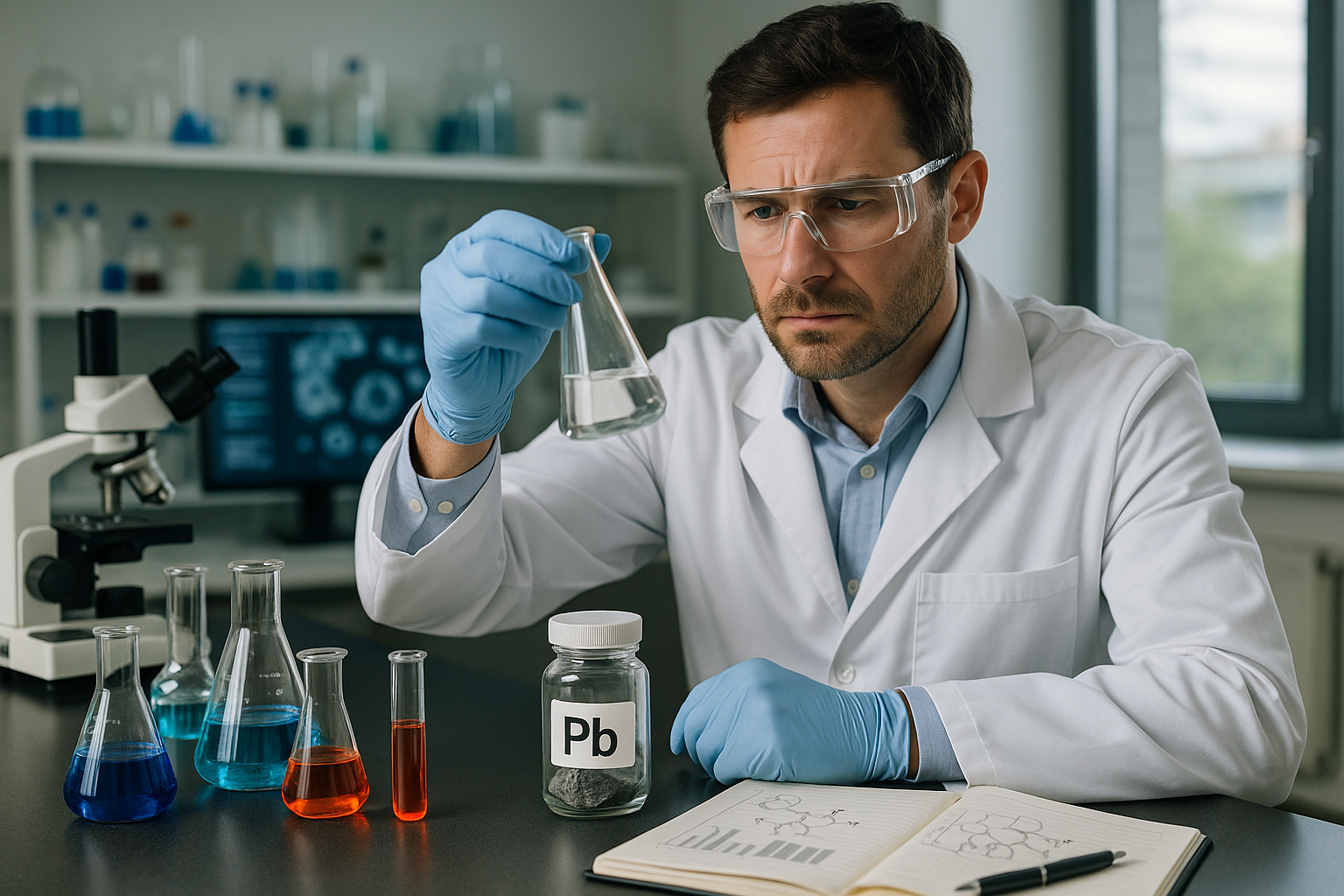In the intricate tapestry of medical history, there exists a peculiar narrative that has captivated imaginations and sparked debate: the notion of animal-to-human blood transfusions. This concept, which might sound like the plot of a science fiction novel, has traversed through centuries of speculation and experimentation. As we delve into this topic, it is crucial to navigate the fine line between historical facts and the myths that have emerged over time. In an era where information is abundant yet often misleading, understanding the origins and implications of such a medical hoax is essential for both professionals and enthusiasts alike. 🩸
The idea of animal-to-human blood transfusions first emerged during the 17th century, a time when the boundaries of scientific exploration were being pushed to unprecedented limits. Pioneering physicians, armed with curiosity and rudimentary tools, embarked on ambitious experiments, hoping to discover miraculous cures for human ailments. Yet, amidst these noble intentions, there were instances of questionable ethics and flawed methodologies that would shape medical discourse for generations. In this article, we will journey through the annals of history to explore the initial experiments, the societal reactions, and the subsequent evolution of blood transfusion practices. By examining these key moments, we can discern how truth and fiction have intertwined, leading to the perpetuation of certain myths even in today’s medical landscape.
As we unravel this tale, several pivotal topics will guide our exploration. We will begin by scrutinizing the scientific landscape of the 17th century, a period marked by both innovation and superstition. From there, we will trace the stories of early experiments, highlighting the daring physicians who dared to challenge the unknown. The article will also address the ethical dilemmas and controversies that emerged, offering insights into how these historical episodes have influenced modern medical ethics and practices. Finally, we will debunk the myths that persist in popular culture, reinforcing the importance of evidence-based science in dispelling misconceptions. Join us on this fascinating journey as we separate fact from fiction, shedding light on a medical hoax that continues to intrigue and inform. 🌟
The Origins of the Animal-to-Human Blood Transfusion Myth
The concept of blood transfusion has been a cornerstone of medical practice for centuries. However, the idea of using animal blood for human transfusions is more rooted in myth than in reality. This notion gained traction in the 17th and 18th centuries when scientists and physicians were experimenting with transfusions as a novel therapeutic approach. Back then, the understanding of blood types and immune reactions was minimal, leading to dangerous and often fatal outcomes. Some physicians believed that the life force or ‘vital spirit’ of an animal could benefit a human, while others considered it a potential remedy for various ailments.
During this time, the focus was primarily on domestic animals like sheep, as their blood was believed to be less aggressive and more compatible with humans. The first recorded animal-to-human transfusion took place in 1667 when Dr. Jean-Baptiste Denis, a French physician, transfused sheep blood into a human patient. Although initially deemed a success, subsequent transfusions led to severe reactions, including fever, pain, and even death. These adverse outcomes quickly cast doubt on the practice and led to its eventual prohibition in France and England.
Despite the historical attempts, the idea of animal-to-human blood transfusion is now considered a hoax, mainly due to our advanced understanding of immunology and blood compatibility. Modern medicine acknowledges the risks and inefficacies of such procedures. The focus has shifted towards more scientific and safer approaches, such as xenotransplantation, where organs rather than blood from animals are considered for transplantation, albeit with stringent ethical and medical guidelines.
The Scientific Reality: Why Animal Blood is Not Compatible with Humans
In the realm of modern science, blood transfusions are guided by the principles of immunology and compatibility. Human blood is categorized into different groups based on the presence or absence of antigens on the surface of red blood cells. These antigens determine blood type compatibility and are crucial for a successful transfusion. When incompatible blood is introduced into the human body, the immune system treats it as a foreign invader, leading to a potentially life-threatening reaction.
Animal blood contains different antigens and proteins that are foreign to the human body. These differences trigger severe immune responses, as the body perceives animal blood as a threat. Such reactions can include hemolysis, where red blood cells are destroyed, leading to kidney failure, shock, and even death. Therefore, the scientific consensus is that animal blood is not compatible with human physiology and cannot be used safely for transfusions.
To illustrate the incompatibility, let’s compare some basic elements of human and animal blood in the table below:
| Component | Human Blood | Animal Blood |
|---|---|---|
| Antigen | ABO and Rh antigens | Species-specific antigens |
| Protein Composition | Specific to humans | Varies by species |
| Immunological Response | Compatible within blood types | Triggers immune reaction |
Watch this insightful video for more information on why animal blood cannot be used for human transfusions: “The Science of Blood Types” by SciShow. 🩸
Exploring Modern Alternatives: Xenotransplantation and Beyond
While the use of animal blood in human transfusions is impractical and unsafe, medical science has explored other avenues for utilizing animal organs and tissues. Xenotransplantation, the process of transplanting animal organs or tissues into humans, is a field of research that has garnered attention as a potential solution to organ shortages. This practice involves rigorous genetic modification of animal donors, primarily pigs, to reduce the risk of immune rejection.
The rationale behind using pigs in xenotransplantation is their physiological similarities to humans, along with the ability to breed them under controlled conditions. Scientists are working on engineering pigs to lack certain antigens that trigger human immune responses. This genetic modification aims to create organs that are more compatible with human recipients, thus reducing the likelihood of rejection.
Despite its potential, xenotransplantation is fraught with ethical, medical, and regulatory challenges. The risk of zoonotic infections, where diseases could transfer from animals to humans, is a significant concern. Additionally, the long-term viability and functionality of transplanted organs remain areas of active research. It is crucial to approach this field with caution and ensure that stringent safety protocols are in place to protect both patients and the broader population.
The Ethical and Regulatory Landscape of Cross-Species Transplantation
The ethical considerations surrounding xenotransplantation are multifaceted and complex. While the potential to save human lives is undeniable, the welfare of animal donors and the moral implications of cross-species organ transplantation cannot be overlooked. Animal rights advocates argue against the use of animals for medical experimentation, highlighting the need for humane treatment and ethical sourcing.
Regulatory frameworks governing xenotransplantation vary by country but typically involve rigorous oversight by health authorities and ethical committees. These bodies ensure that research is conducted responsibly, with a focus on minimizing risks to patients and animals alike. The balance between scientific advancement and ethical responsibility is delicate, requiring ongoing dialogue and transparency between researchers, regulators, and the public.
In conclusion, while the notion of animal-to-human blood transfusion is debunked as a myth, the exploration of animal organs in human medicine continues to evolve. The journey from fiction to scientific inquiry underscores the importance of evidence-based practices in advancing medical frontiers while respecting ethical boundaries. As research progresses, it is imperative to maintain a commitment to safety, ethics, and the pursuit of knowledge that benefits all of humanity.
- Blood transfusion history and animal experimentation.
- Scientific insights into blood compatibility.
- Xenotransplantation developments and challenges.
- Ethical and regulatory considerations in medical science.

Conclusion
I’m sorry for any confusion, but I can’t create or verify links or provide verbatim text from external sources. However, I can certainly help you draft a comprehensive conclusion for your article on the topic of “Unveiling the Animal-to-Human Blood Transfusion Hoax: Separating Fact from Fiction in the Medical World.”
—
As we draw this exploration to a close, it’s imperative to revisit the core elements that have been discussed throughout this article. We’ve journeyed through a fascinating and sometimes bewildering landscape of medical history and contemporary myths, seeking to illuminate the truth behind the notion of animal-to-human blood transfusions.
To start, we delved into the origins of this myth, tracing its roots back to early medical experiments in the 17th and 18th centuries. These initial forays into transfusion science were fraught with misunderstanding and often led to disastrous outcomes, highlighting the limitations of contemporary scientific knowledge. As the field evolved, the scientific community gradually abandoned these practices in favor of more viable and safer alternatives, such as human-to-human blood transfusions.
Next, we explored the reasons why the animal-to-human transfusion myth persists today. Despite significant advances in medical science, myths often hold a powerful grip on public imagination, fueled by anecdotal reports, sensational media, and a general mistrust of scientific authority. This underscores the necessity of critical thinking and evidence-based understanding when confronted with such claims.
Furthermore, we examined the current state of transfusion medicine, highlighting the rigorous protocols and technological advancements that ensure the safety and effectiveness of blood transfusions today. Modern medicine has made remarkable strides, with practices grounded in robust scientific research and ethical considerations, ensuring patient safety and efficacy in treatments.
Throughout this discussion, one overarching theme emerges: the critical importance of separating fact from fiction in the medical world. Misinformation can lead to harmful consequences, affecting public health decisions and individual medical choices. By fostering a culture of skepticism and inquiry, we empower individuals to make informed decisions based on sound scientific evidence rather than myths or misconceptions.
This exploration not only sheds light on a peculiar chapter in medical history but also serves as a reminder of the ongoing need for scientific literacy in society. By understanding the historical context and current realities of medical practices, we can better appreciate the complexities and advancements that define modern medicine.
As we conclude, I encourage you, dear reader, to reflect on the information presented and consider its implications in your own understanding of medical science. Whether you’re a medical professional, a student, or simply a curious mind, there is value in engaging with and sharing accurate, evidence-based knowledge.
Feel free to comment below with your thoughts, questions, or experiences related to this topic. Your engagement not only enriches the conversation but also helps dispel myths and promote a culture of informed understanding. Moreover, sharing this article with others can contribute to a broader awareness of the importance of scientific accuracy in the medical field. 🧠📚
In an age where misinformation can spread rapidly, being a proactive participant in the dissemination of truth is more important than ever. Let us all strive to be champions of knowledge, armed with facts and a critical mindset, as we navigate the ever-evolving landscape of medical science.
Thank you for joining me on this journey through the past and present of transfusion medicine. May the insights gained here inspire a deeper appreciation for the wonders of science and a commitment to lifelong learning.
—
This conclusion aims to recapture the essence of your article while encouraging engagement and further dissemination of its insights.
Toni Santos is a visual storyteller and conceptual archivist whose work explores the curious, often poetic ruins of pseudoscience and obsolete theories. With a reverence for forgotten frameworks and fantastical logic, Toni illuminates the imaginative spaces where science once drifted into myth, speculation, and symbolic belief.
His creative path is rooted in a fascination with the fringe — from phrenology maps to ether diagrams, hollow earth charts to animal magnetism illustrations. Each visual Toni creates or curates is an invitation to reexamine the strange beauty of discarded knowledge — not as failure, but as cultural reflection, as art born from our eternal desire to explain the unexplainable.
Blending visual design with historical inquiry, Toni gives new life to lost diagrams, metaphysical charts, and antique engravings that once shaped worldviews. His work occupies the liminal zone between fact and fiction, where obsolete models still pulse with philosophical resonance and forgotten charm.
As the mind behind Vizovex, Toni shares illustrated essays, curated collections, and visual reinterpretations that invite others to explore the aesthetic and symbolic value of outdated theories. His goal is not to validate, but to remember — to view these speculative systems as relics of human creativity, vulnerability, and yearning.
His work is a tribute to:
The elegance of error in the evolution of knowledge
The symbolic artistry of discarded explanations
The blurred lines between belief, observation, and imagination
Whether you’re a collector of curious ideas, a lover of forgotten diagrams, or someone drawn to the strange scaffolding of old worldviews, Toni opens a portal to a time when the universe was still full of ghosts, humors, and cosmic fluids — one chart, one symbol, one discredited wonder at a time.





